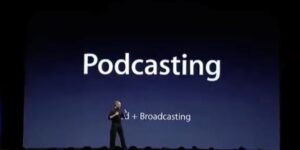Keyboards and Computers, Together at Last!
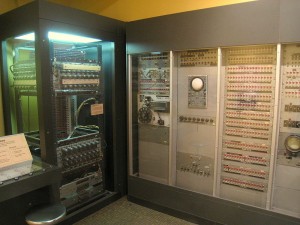 July 4, 1956
July 4, 1956
MIT’s Whirlwind, which had been completed five years earlier, becomes the first computer in the world to allow its users to enter commands through a keyboard. Previously, all input was accomplished through dials, switches, and/or punch cards.
World, Meet the Internet
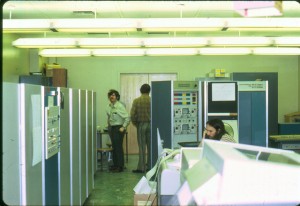 July 3, 1969
July 3, 1969
UCLA issues a press release stating that it “will become the first station in a nationwide computer network which, for the first time, will link together computers of different makes and using different machine languages into one time-sharing system.” It went on to say that “Creation of the network represents a major forward step in computer technology and may server as the forerunner of large computer networks of the future.”
How right they were! Of course, this was the first step in creating what became known as the Internet. The first transmission on that newly created internet wasn’t actually sent until October 29th.
I could only find the text of the press release from the above link, which is a scan from a book. So I took the liberty of transcribing it using Siri along with a little manual editing. The text of the UCLA press release dated July 3rd, 1969 follows:
UCLA will become the first station in a nationwide computer network which, for the first time, will link together computers of different makes and using different machine languages into one time-sharing system.
Creation of the network represents a major forward step in computer technology and may serve as the forerunner of large computer networks of the future.
The ambitious project is supported by the Defense Department’s Advanced Research Project Agency (ARPA), which has pioneered many advances in computer research, technology and applications during the past decade. The network project was proposed and is headed by ARPA’s Dr. Lawrence G. Roberts.
The system will, in effect, pool the computer power, programs and specialized know-how of about 15 computer research centers, stretching from UCLA to M.I.T. Other California network stations (or nodes) will be located at the Rand Corp. and System Development Corp., both of Santa Monica; the Santa Barbara and Berkeley campuses of the University of California; Stanford University and the Stanford Research Institute.
The first stage of the network will go into operation this fall as a subnet joining UCLA, Stanford Research Institute, UC Santa Barbara, and the University of Utah. The entire network is expected to be operational in late 1970.
Engineering professor Leonard Kleinrock, who heads the UCLA project, describes how the network might handle a sample problem:
Programmers at Computer A have a blurred photo which they want to bring into focus. Their program transmits the photo to Computer B, which specializes in computer graphics, and instructs B’s program to remove the blur and enhance the contrast. If B requires specialized computational assistance, it may call on Computer C for help.
The processed work is shuttled back and forth until B is satisfied with the photo, and then sends it back to Computer A. The messages, ranging across the country, can flash between computers in a matter of seconds, Dr. Kleinrock says.
UCLA’s part of the project will involve about 20 people, including some 15 graduate students. The group will play a key role as the official network measurement center, analyzing computer interaction and network behavior, comparing performance against anticipated results, and keeping a continuous check on the network’s effectiveness. For this job, UCLA will use a highly specialized computer, the Sigma 7, developed by Scientific Data Systems of Los Angeles.
Each computer in the network will be equipped with its own interface message processor (IMP) which will double as a sort of translator among the Babel of computer languages and as a message handler and router.
Computer networks are not an entirely new concept, notes Dr. Kleinrock. The SAGE radar defense system of the Fifties was one of the first, followed by the airlines’ SABRE reservation system. At the present time, the nation’s electronically switched telephone system is the world’s largest computer network.
However, all three are highly specialized and single-purpose systems, in contrast to the planned ARPA system which will link a wide assortment of different computers for a wide range of unclassified research functions.
“As of now, computer networks are still in their infancy,” says Dr. Kleinrock. “But as they grow up and become more sophisticated, we will probably see the spread of ‘computer utilities’, which, like present electronic and telephone utilities, will service individual homes and offices across the country.”
The First Mass-Produced Computer
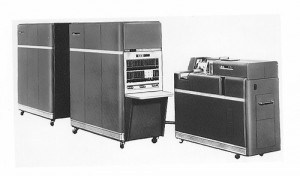 July 2, 1953
July 2, 1953
IBM announced its 650 series of computers, the first mass-produced computer, and the dominant computer of the decade. The IBM 650 stored information on a rotating magnetic drum and received it on programmed punch cards. Its memory stored numbers with up to 10 decimal digits.
Sony Walkman Makes Music Portable
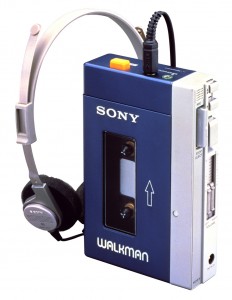 July 1, 1979
July 1, 1979
The first Sony Walkman, the TPS-L2, goes on sale in Japan. It would go on sale in the US about a year later. By allowing owners to carry their personal music with them, the Walkman and their iconic headphones introduce a revolution in listening habits and popular culture at large.
The Transition to Transistors Begins
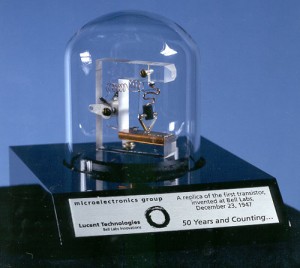 June 30, 1948
June 30, 1948
Originally designed to create improvements to electromechanical relays and vacuum tubes in telephone switching equipment, Bell Labs holds a press conference in New York to publicly demonstrate the first point-contact transistor. The transistor represents a significant advance in technology. As it is developed over the next few years, it will become the successor to the vacuum tube, the primary method of controlling electronic circuitry at the time. The use of transistors allows the development of the integrated circuit and microchips which kickstarted the rapid advance of electronic and computerized technology over the last 70+ years. Every industry that utilizes technology, from communications to computers to space travel to video games to media, owes a great deal to the development of the transistor.
The Phone That Changed Everything
 June 29, 2007
June 29, 2007
Nearly 6 months after it was introduced, Apple’s highly-anticipated iPhone goes on sale. Generally downplayed by Old Word Technology pundits after its introduction, the iPhone was greeted by long lines of buyers around the country on that first day. Quickly becoming an overnight phenomenon, one million iPhones were sold in only 74 days. Since those early days, the ensuing iPhone models have continued to set sales records and have completely changed not only the smartphone and technology industries, but the world as well.
Apple Takes Podcasting Mainstream
Apple releases iTunes 4.9, the first version of iTunes to incorporate Podcast subscribing and listening. Podcasting was a growing phenomenon and Apple realized it could both help build the medium and also become the defacto Podcast standard by linking it to its incredibly popular iTunes and iPod platforms. On this date there were 3000 Podcasts available in the iTunes directory. Apple’s move paid off and as of 2021 there were over 2 million Podcasts listed in the Apple Podcast Directory. Apple’s Podcast platform is still considered the standard on which podcasters should publish their shows.
There was an up and coming Podcast directory named Odeo at the time. Given Apple’s move Odeo suddenly became irrelevant. However, the people behind the company shifted focus and soon created a new service called Twttr, soon to be renamed Twitter. Isn’t it so interesting the way technology history weaves itself?
First Commercial Communications Satellite Activates
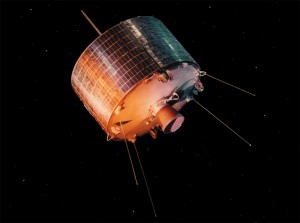 June 28, 1965
June 28, 1965
Intelsat I, the first commercial communications satellite, is activated for service. It was nicknamed “Early Bird” after the famous proverb, and became famous for carrying the first commercial telephone call between America and Europe, as well as helping provide TV coverage of the Gemini 6 splashdown.
Laying of First Transatlantic Telephone Cable
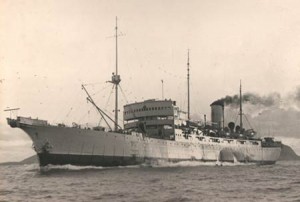 June 28, 1955
June 28, 1955
The HMTS Monarch, the largest cable laying ship in the world at the time, launches from Clarenville, Newfoundland to begin laying TAT-1, the first Transatlantic telephone cable. TAT-1 would be inaugurated 15 months later on September 25, 1956. TAT-1 may be best known for carrying the famous “hot line” between the United States and the Soviet Union during the Cold War.
All Hail Atari
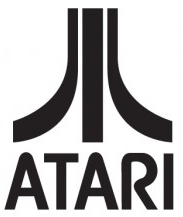 June 27, 1972
June 27, 1972
The iconic video game company, Atari, is founded by Nolan Bushnell and Ted Dabney. Their first video game, Pong, was the first commercially successful video game and led to the start of the video game industry. In 1977, Atari’s Video Computer System (known as the VCS and later the Atari 2600) popularized the home video game market. Before the video game crash of 1983, Atari was the fastest growing company in the history of the United States at the time, and the brand was synonymous with video games.
All those who have enjoyed video games, whether we started playing in the 70’s, 80’s, or just in the last few years, should take a moment to reflect on the company that single-handedly spawned the video game industries we so cherish. I propose that the best way to do that is to … well … stop what you’re doing and play a video game right now!

